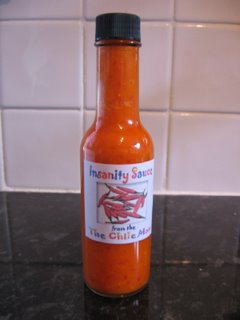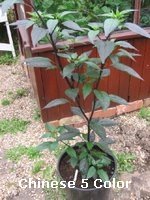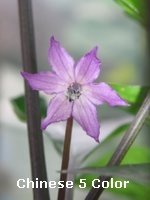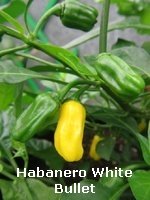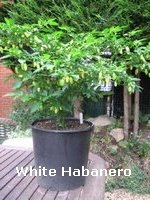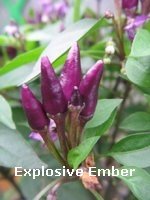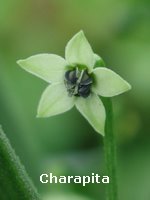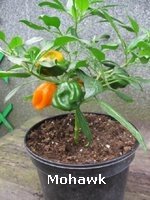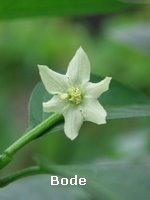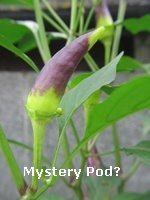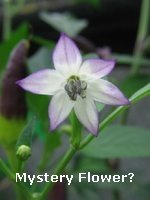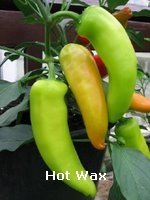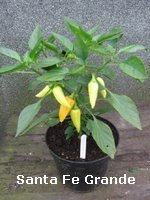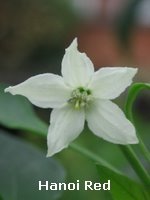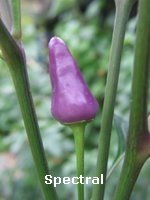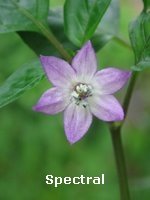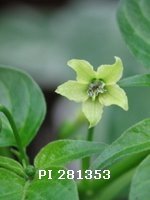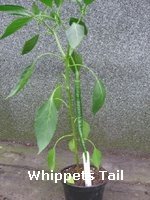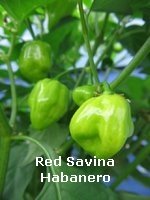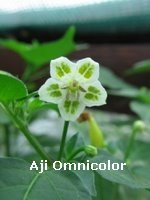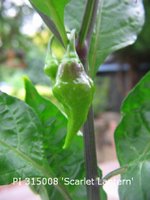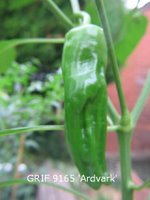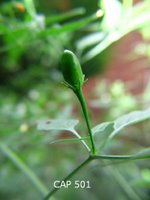
Two of the varieties which have attracted lots of attention this year are the fearsomely hot
Naga Morich and possible the worlds longest pepper, the
Whippets Tail.
I have grown Naga Morich for a number years and its always been my 'weapon of choice' for feeding to my mates who reckon they can handle anything. However it wasent until April this year when the variety was brought to most peoples attention after Michael Michaud, a UK agronomist had his Nagas tested by an American laboratory who found them to be almost twice as hot as the current Guinness Book of Records holder - the
Red Savina Habanero.In the world of Chile growing, there are always arguments on what is the world hottest but after growing many of the hottest varieties such as the aforementioned Red Savina,
Chocolate Habanero,
Fatalii and
Goat Pepper, believe me, at a reported 970,000 SHU, if you eat a Naga Morich pod whole you will wish you were dead. You can find further information as well as a recipie for thechilemans Naga 'Snake Bite' hot sauce
here.
Unfortunately, I didnt get round to sowing my seeds (from last years crop) until late March and aside from a sunny July, the rest of this seasons weather has been terrible. This variety is also slow growing which doesnt help matters although having said that, around half a dozen of my larger plants are flowering and some even have immature pods on them. The missus is going to love the fumes in the kitchen (not) when I finally get round to cooking with these bad boys!!!!
Whippets Tail (also known as Joes long) is a Cayenne type pepper and is the subject of this years Chileman growing competition - '
The Whippets Tail Challenge'. For a bit of fun, back in April we challenged our pod pals from around the world to see who could grow the longest pod. My best pod so far measures 23cm, a mere tiddler compared to Derek Bureau's (aka Potawie) 28cm monster - and his still growing!! Check out the current leaderboard
here.

The banter the competiton has generated on the
Chillis Galore forum in particular has been one of the highlights of this growing season with the thread generating 150 posts (and almost 11,500 viewings) the last time I bothered to look. Who said chile growing isn't fun?
Be sure to watch this space for further announcements on next years contest.
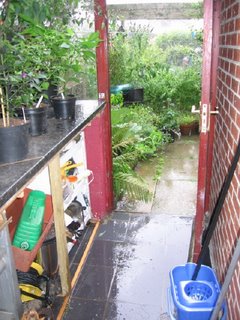 Well Ive seen it all now. After the hottest July (in UK) for over 200 years; August, at least here in the North east of England has been an absolute disaster. Ive never seen so much rain in a single month and its supposed to be the height of summer!!! About half a hour ago I was sitting in the garden enjoying a rare bit of August sun when all of a sudden all hell broke loose - Hail stones so large I though the windows were going to go through.
Well Ive seen it all now. After the hottest July (in UK) for over 200 years; August, at least here in the North east of England has been an absolute disaster. Ive never seen so much rain in a single month and its supposed to be the height of summer!!! About half a hour ago I was sitting in the garden enjoying a rare bit of August sun when all of a sudden all hell broke loose - Hail stones so large I though the windows were going to go through.



